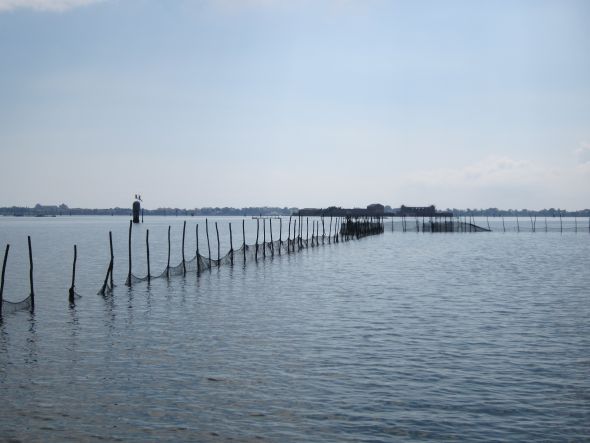
I promise that I will not transform this blog into the daily bulletin from the MOSE hecatomb.
But two days ago (June 14), at the last meeting of the council of ministers, the government did something so extreme — and indisputably necessary and long overdue — that I want at least to make it known.
They abolished the Magistrato alle Acque. An entire government agency with 500 years of history is no more. Yesterday it was, today it is not.
Beginning in October, its responsibilities will be “absorbed” by the Inter-regional Director of Public Works of the three contiguous regions of the Veneto, Friuli Venezia Giulia, and Trentino Alto Adige.
Of course this is good, but I feel sick at heart. Not only because of the annihilation of one of the last tiny links to the Venetian Republic, but because a gesture of this magnitude shows all too vividly the extent of the rot.
People who occasionally had to request a permit for temporary use of a certain stretch of lagoon have long been aware that the Magistrato was as swampy as Reelfoot Lake. It wouldn’t have been the first city agency whose functionaries accepted the occasional guerdon for speeding up the processing of requests. I’m not saying the employees of the Magistracy did such a thing. I’m just saying that if they did, they wouldn’t have been alone.

The Magistracy of the Waters was established in 1501; it was specifically charged with overseeing the health and security of the lagoon, and any action required — digging, land reclamation, maintenance — had to have its approval.
Care of the lagoon required care of its tributary rivers, too. Venetian engineers diverted the Po River, for God’s sake; between 1600 and 1604, innumerable men with shovels and wheelbarrows cut Italy’s greatest river at Porto Viro and turned it southward. There were many reasons for this, some of them political, some economic, but it was also time to limit the amount of sediment that was filling up the lagoon. The Venetian Republic knew that the care of the lagoon was its primary life insurance.
“Lagoon” (laguna) is a Venetian word, by the way.
But the Magistrato was populated by many individuals who were not all of the same stripe, and in 1678, human nature having demonstrated its impressive dimensions, the Venetian Senate created a group of inquisitors to conduct the legal cases against those accused of having damaged the lagoon. There must be some diabolical hothouse somewhere that causes little tiny crook seedlings to sprout, then sells them to the Magistrato alle Acque where, in its own special microclimate, they can flourish and grow to be big tall leafy crooks.
In fact, I now learn that this is the third time that the Magistrato has been “suppressed,” as the headlines put it, though it’s the first occasion where the reason was crime.
In 1808, during the brief but eventful French domination of the city (1806-1814), the Viceroy Eugene Beauharnais put an end to it, for reasons I haven’t yet discovered. It didn’t take long for it to become evident that this was an error, the neglect having contributed to an assortment of watery damage. When the Austrians took over for the first time (1816-1848), they quickly re-established the Magistrato, reorganized it, renamed some departments, applied a coat of varnish and it was good to go again.
In 1866, when Venice and the Veneto became part of the new nation of Italy, the Magistrato was annulled again, and again a series of hydraulic disasters showed what serious consequences could come from indifference to the state of the waterways.
The Magistrato was reformulated for the third time in 1907 as part of the Ministry of Infrastructure and Transport, and its authority expanded to cover the entire hydrological basin of northeast Italy — an enormous watershed of rivers, lakes, and other lagoons stretching from Mantova to Trieste. Total area of its authority was some 40,000 square kilometers (15,000 square miles). So when we talk about the misfeasance of the Magistrato, we’re not talking about some little local entity that turned out to have just a few bad apples.
I very sincerely hope that Cuccioletta and Piva, in their respective cells awaiting trial, are happy. Because I’m not, and neither are a whole bunch of other people.

